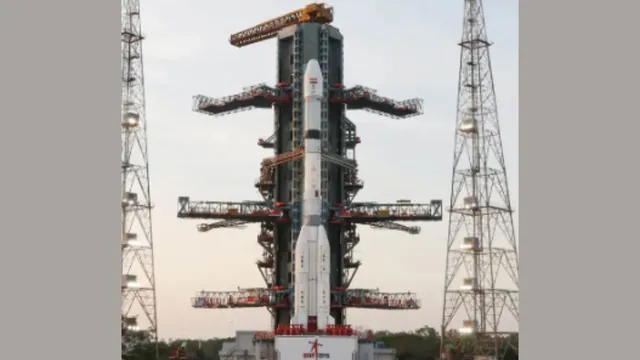- By Anushka Vats
- Wed, 29 Jan 2025 08:08 AM (IST)
- Source:JND
The Indian Space Research Organisation OISRO on Wednesday marked its 100th mission with the launch of an advanced navigation satellite, NVS-02, that would aid in terrestrial, aerial and maritime navigation and precision agriculture, among others.
The early morning launch marked the first under the leadership of ISRO Chairman V Narayanan, who took office on January 16, as well as the agency's first mission of 2025. Before this, ISRO had successfully carried out a space docking experiment on December 30, 2024, which was its 99th mission.
Narayanan said he was extremely happy to announce that ISRO's first venture in 2025 was a success.
The satellite was "precisely injected into the required (GTO) orbit. This mission is the 100th launch which is a very significant milestone," he said in his address post the successful launch.
The launch, which marked the first mission of 2025, took place from the second launch pad at 6:23 am after a precise 27.30-hour countdown. The GSLV rocket, towering at 50.9 metres, lifted off with a trail of thick smoke, soaring into the cloudy sky.
Around 19 minutes after lift-off, the rocket separated its payload, the NVS-02 satellite, placing it into the intended Geosynchronous Transfer Orbit (GTO). The satellite is the second in a series designed for the Indian Navigation Constellation (NavIC). NavIC aims to provide accurate position, timing, and velocity information to users across the Indian subcontinent and areas extending up to 1,500 km beyond India.
This mission follows the successful GSLV-F12 launch in May 2023, which deployed NVS-01, the first of this second generation of navigation satellites. The NVS-02 satellite will support several applications, including navigation for terrestrial, aerial, and maritime sectors, as well as precision agriculture, fleet management, and emergency services. Additionally, it will assist in mobile location services, satellite orbit determination, and IoT-based applications.
The NVS-02 satellite, weighing 2,250 kg, was developed at the UR Rao Satellite Centre in Bengaluru. It features advanced navigation payloads across L1, L5, and S bands, and includes a Tri-band antenna. Its core navigation payload is powered by a Rubidium Atomic Frequency Standard (RAFS), an atomic clock that ensures stable frequency references. The satellite also contains a CxC transponder for precise orbit determination.

